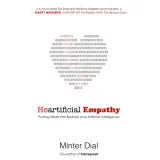


Have we reached ‘peak content?’

Hello…
Hello…?
Is there anyone there?
Is anyone actually reading this? Am I talking to myself? Or worse, am I just talking to a robot?
You might not have noticed, but we’re drowning. Drowning in a sea of content. Infinite content. Hot takes. Reaction pieces. Listicles. Thought leadership. Take downs. Rebuttals. Retorts. Fake news. Real news. “You call this news?”
And you know what? There’s too damn much of it. Which, as Content Manager for Pull, is a bit of a risky thing to say. When done well, it can be an incredible marketing tool, but somewhere along the way we lost the real reason for producing content. So naturally I thought, ‘why not write a 1,700-word blog on why we have too many blogs’. Irony.
Content ascends to the throne
We’ve all heard the phrase ‘content is king’. Then we heard it again. And again. And again. Then we even started hearing it from Janice in accounts. ? Point is, you’re probably sick of hearing it by now. But let’s back up a bit and try to understand when and why it became so ubiquitous.
It all comes down to a couple of things. One is SEO and Google, which we’ll come onto in a bit. The other? You. Or rather, users.
With the rise of social media, brands soon twigged that channels like Facebook and Instagram offered them almost unrivalled access to current and potential customers. So, what did they do? Naturally, they started spamming people’s feeds full of hard-sell, low quality posts. Realising this wasn’t giving users the best experience, the social networks begin to reduce brands’ organic reach, forcing them to buy ads. And did these ads look good? Of course not. Users did not enjoy this. So, we see the subsequent rise of ad blockers.
At this point, a lightbulb comes on in marketing departments around the world: what if we show users stuff they actually want to see? Content that is useful. Helpful (except you know they probably definitely used the phrase ‘add-value’).
This is a great development though. Firstly, it creates sought-after, prestigious, not-at-all-wanky job titles such as Content and Social Media Manager* for yours truly. Secondly, it signals a shift to an approach where brands are pushing out material that attracts rather than interrupts. It makes people happy, not angry. Essentially, good content is about them (the user), not you (the brand).
I mentioned Google earlier. SEO is a big deal. If you ain’t on page one of Google, you might as well not exist, right? So, we’re always looking for ways to get our brand in those lucrative positions. Back in the day, if you wanted your site to rank highly on Google, it was all about making sure your website and pages were jam-packed with keywords. This is what the search engine algorithms looked for.
But, as with the social networks, the brains over at Google (other search engines are available) realised that people don’t use a search engine because they’re trying to find the page or site stuffed with the most keywords. At the end of the day, users are just looking for a page that’s relevant, useful or enjoyable. Enter Panda, a Google algorithm designed to award every webpage a ‘quality score’. Suddenly, keyword stuffing and duplicated or thin content was penalized. This was followed by Hummingbird in 2013, which was developed to match user intent (rather than merely search terms) with the best search results.
This shift in both search and social saw the rise of brands as content providers. Starbucks no longer sell coffee, they tell stories. Red Bull wasn’t simply an energy drink, but a prolific publishing behemoth.

Peak content
So, that actually sounds pretty good right? Brands producing high quality, enjoyable content. What’s not to like?
Well. The problem is, everyone thought they needed to get in on the act. Content is king becomes a refrain uttered so much that it loses its meaning. Good, high quality content becomes any content. It’s no longer content is king, but content for content’s sake.
And it’s a waste of everyone’s time.
Think about the business and brands you deal with. Some will be producing brilliant, thought-provoking, highly creative content. They might be working with a carefully curated band of influencers who fit their brand and customers perfectly. They might be executing an incredible email automation programme, segmented to the nth degree to ensure people only receive the content that matters to them. They might be.
But there’s plenty that aren’t.
That local law firm you used once? They’ve got a blog. Stationary supplier on that industrial park? Got a blog. Local vets? Got a blog. And guess what? It doesn’t just stay there. It’ll be on their Facebook page. Shoved out on LinkedIn. Tweeted.
Why?! They’ve been hoodwinked. Tricked into thinking they need one because Google said so. It seemingly doesn’t matter if they haven’t got anything fresh or new to say.
We’ve entered an era where we are no longer writing for users. We’re writing for robots. We’re told that one of the big ranking factors for where your page sits on Google is ‘freshness’. Is there new content being added regularly? ‘The frequency of posts can have a major effect on your position in search results’. So what happens? Brands and businesses start posting new blogs every few days. To hell with the quality of these, Google needs something new and it needs it now!
And of course, who is reading these articles? Maybe customers. But it’s written for robots. For a search engine algorithm to check a time and date and tick a box that says ‘yes’ this is new.
This constant churn of content is ultimately not good for the user. Teams are being stretched to produce more and more. Sometimes, it might even be written by people with no experience, simply because the business needs new content. To hell with whether or not your business had anything new to say or talk about. Then what we’re left with is a 500 word blog post that says nothing. Adds no value. Nobody spends any time reading it. It’s a waste, and the user won’t return.
And I haven’t even started on social content yet. Back in the days when your feed and timelines were arranged in chronological order, it made sense to post as frequently as you could, often several times a day. This was your chance to reach your customers and followers, and if you weren’t posting on your timeline when they were active, then you’d miss them. But that has changed.
Today, most of the social networks have abandoned the chronological feed. The idea was that their algorithms are now so sophisticated that they can judge what content is performing well, what is most engaging and which users might like to see it. And, despite protests to the contrary from some users, it works pretty well. Generally, the cream rises to the top. So, you no longer need to post lots of content. Just good content. Which is the way it should be.
The king is dead, long live the king!
So, what does the future hold for content?
Voice search looms large here. The thinking goes that eventually, one click will be too much for users. We’ll have become so accustomed to speaking our requests, queries or thoughts that the idea of having to click a button or visit a website might one day seem like too much hassle.
How does content work in this space? Well, the art of good copy writing will be elevated. How a brand uses words and its tone of voice will become more important than ever as personal assistants such as Alexa or Siri relay our words to users and customers.
It’s also worth considering the medium in which you create your content. With the explosion in the number of people listening to podcasts – a number only set to grow – we might start to see more and more brands make the shift from a weekly blog to a regular podcast, or programmed tv on things like Instagram TV and Facebook Live.
Influencer marketing is a huge – and growing – industry. But one with massive potential with regards to content. I mean, who is more likely to produce compelling, vibrant, relatable content – a health food supplement, or an army of wellbeing influencers with carefully cultivated following? Working with these influencers to produce great content that can live on your brand’s real estate such as website or social channels is going to be key, if it isn’t already.
How to get the most out of your content
Less is more!
According to Hubspot, 19 out of 20 pieces of content get little to no attention. To put it another way, if you produced 90% less content, you’d still achieve the same result. Focus on producing one or two killer pieces of content over a dozen average ones. If not, you’ll be stretching your team, diluting the quality and turning off customers.
Build around topics!
Write about what you know and build yourself a niche. Last August, Google rolled out an algorithm update which favoured those sites which can demonstrate clear thought leadership or expertise in their field. So, think carefully before firing off a blog with a tenuous link to a recent pop-culture event or where you’re clearly not the experts. Stay in your lane guys!
Don’t use quantity to measure success
Seriously, we mean it when we say less is more. Don’t even think about setting a KPI that dictates X pieces of content are required each month. Focus on other metrics, such as site traffic or engagement. And above all, focus on quality.
Ask yourself why
We cannot stress this enough, but there needs to be a reason for your content to exist. Do you have something new to say? Will it add value to the person reading it? If the answer to either of these is no, stop typing!
Consider your medium
As we’ve mentioned, think about the form your content takes and consider your customers. Perhaps an email newsletter might be more appropriate than a blog post. Maybe a podcast over a vlog. How about an influencer programme to reach more millennials?
If this blog has you thinking that your content strategy could do with a bit of a spring-clean, get in touch with our team.
*Before anyone interprets this as a 1,700 word resignation letter, I love my job and believe wholeheartedly in the power of content marketing done well.
Posted 11 March 2019 by Ben Waterhouse